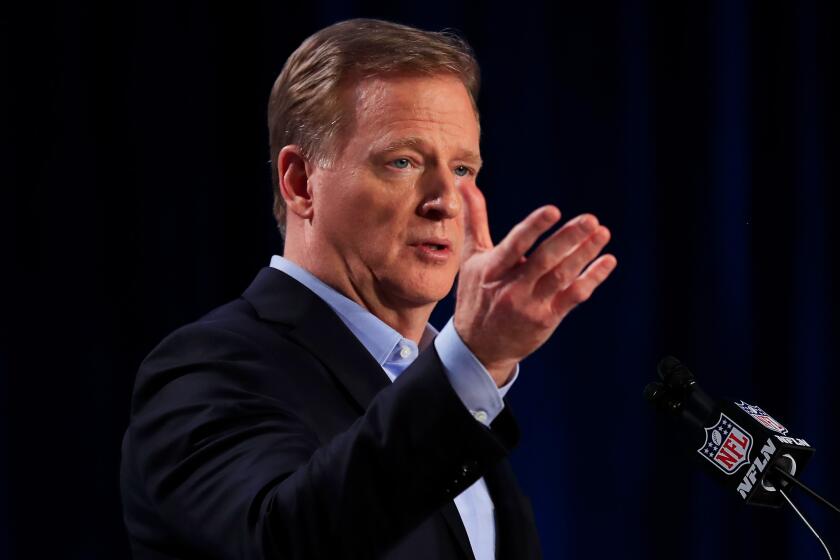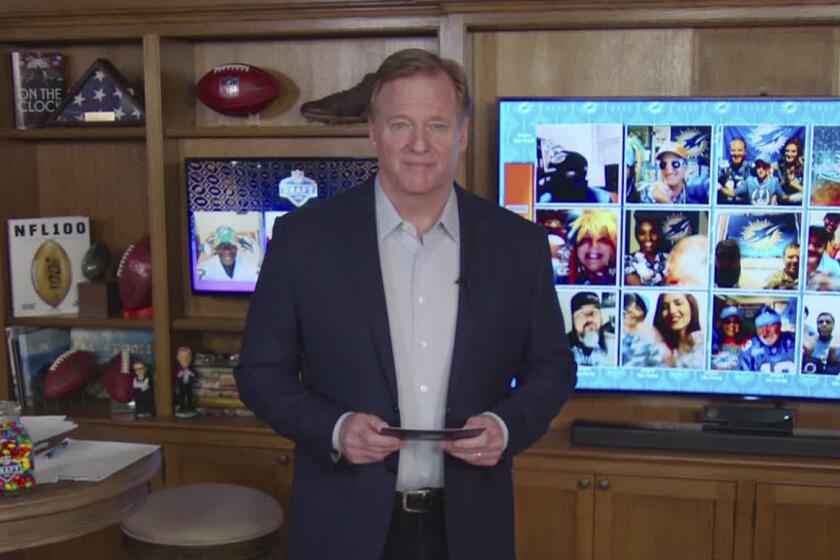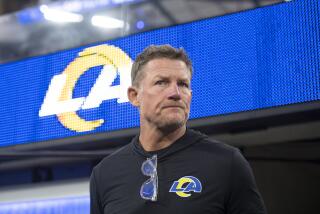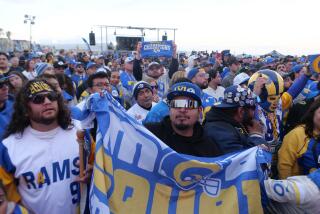For the Chargers and Rams, the NFL’s first virtual draft was a game changer
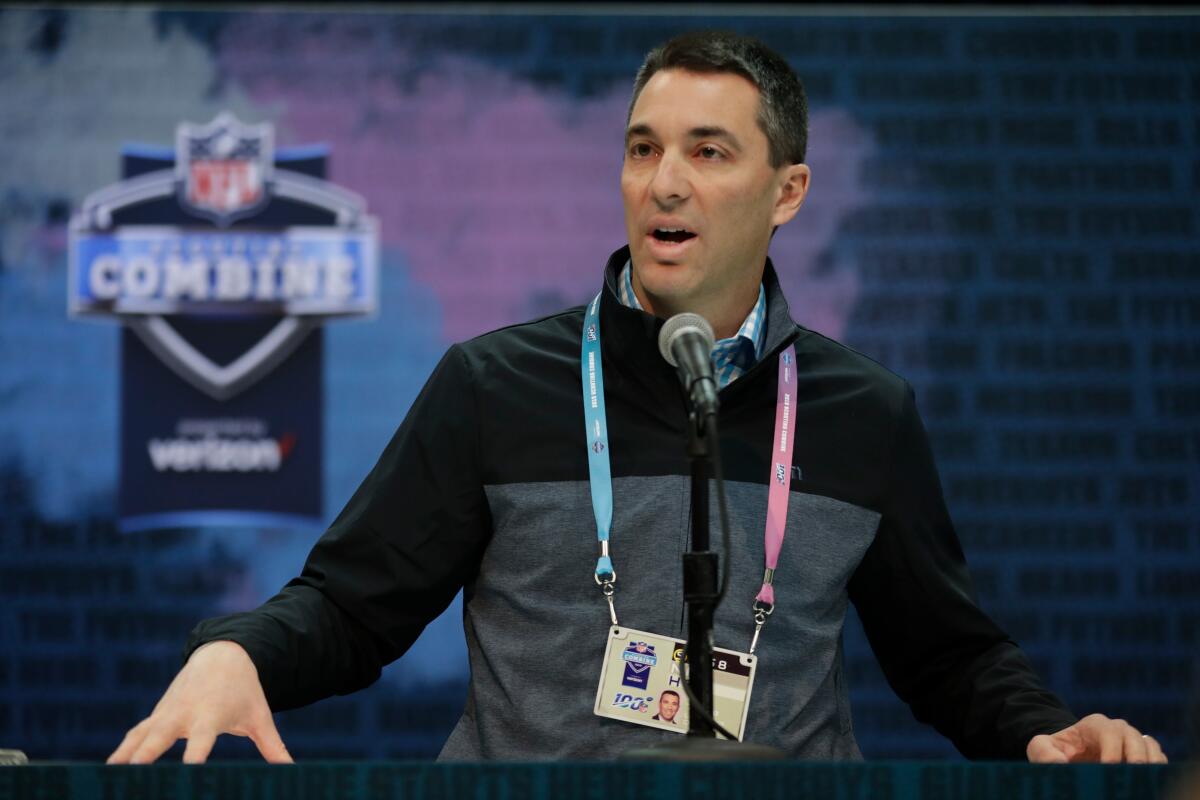
- Share via
At the conclusion of the NFL draft this past weekend, the general manager of the Chargers reached out to Commissioner Roger Goodell with a simple message:
I was wrong.
“I’ll be honest, I was one of the GMs that was concerned about having the draft as scheduled,” Tom Telesco said Monday. “But it brought out incredible teamwork in our organization the last six weeks. It forced us to embrace some technology that was foreign to me, and to us, and it allowed me to have a once-in-a-lifetime experience with my family.”
The virtual draft, most of which was conducted by streaming video from more than 200 locales, was a smashing success. It shattered TV viewership records — not surprising because it was the only live sports event in six weeks — and gave a three-day audience of 55 million a peek into the homes of players, coaches, executives and team owners.
It wasn’t easy for everyone to adapt to the new plan.
“We’re all creatures of habit as general managers,” Telesco said. “We love to prepare. So for this to come up out of the blue, that we’re going to have this draft the way we were going to do it, was a shock to the system. But I’m glad that leadership saw a way to proceed with this, and it worked out really well.”
The 2020 NFL draft had some rough edges, but the ingenuity of the broadcast could offer a glimpse into the new normal for sports.
He said as much in a post-draft email to Goodell, one of more than 1,000 he received in the aftermath of the event. The commissioner got right back to him.
“If I read you some of the emails and texts I’ve gotten, some of them from people I don’t even know, the things that were said were just really extraordinary,” Goodell told The Times. “There’s nothing more rewarding than taking on something ambitious, risky, but powerful, and making it all work.”
Telesco credited Goodell and the NFL Management Council Executive Committee, of which Chargers owner Dean Spanos is a member, for having “the foresight and leadership to proceed.”
The week Goodell made the decision to keep the draft in place, Telesco was among a group of general managers who had a conference call with the league to express their concerns. One problem was that different states had different stay-at-home rules, so whereas the Chargers couldn’t use their facility, other clubs could use theirs. The GMs regarded that as a competitive imbalance.
Shortly after that call, the NFL issued a blanket ruling that all team facilities would be closed.
“The most significant thing is, everybody was doing the same thing,” Goodell said. “It’s not like one team is going to be in their facility, and another team has got to sit and go through all this other stuff.”
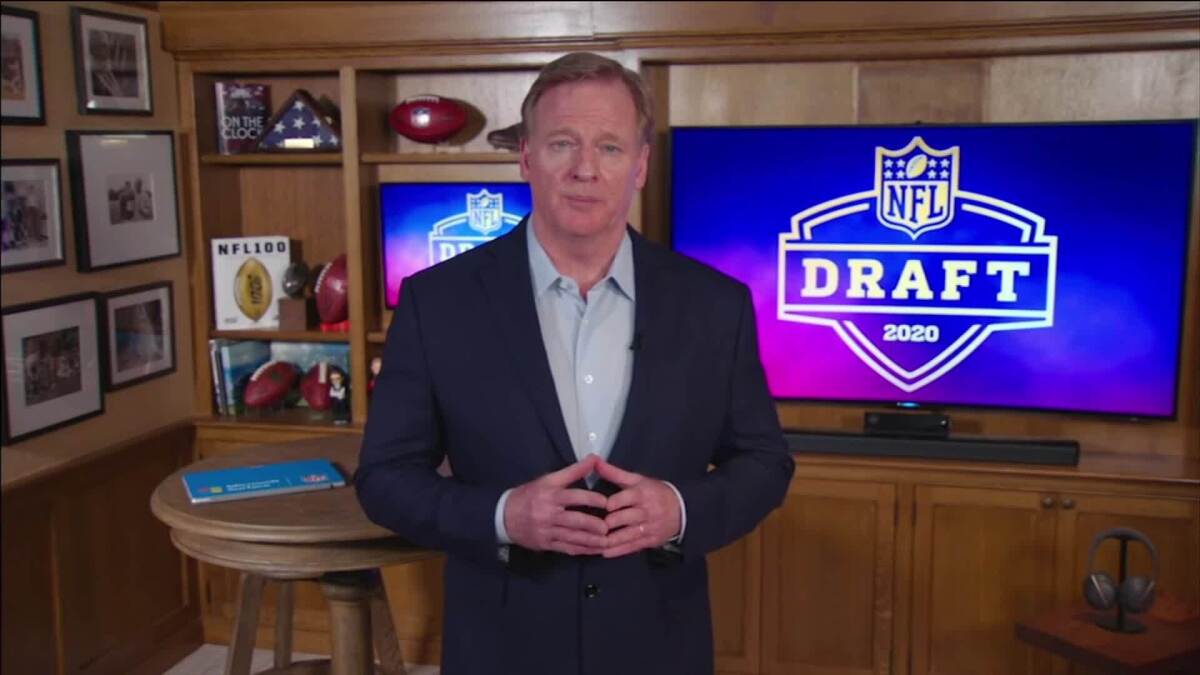
The Chargers had two selections in the first round, and Telesco, working from the living room of his Newport Beach home, allowed his wife, Larah, and their three teenaged children to participate in the process.
“My wife was working for our digital media department with her phone, taking video and sound of the phone calls we made with the draft picks. My daughter, Elena, she interviewed me after the draft picks. I had my son Thomas texting [media relations director] Josh Rupprecht our pick when we turned it in, so he had some heads up. And my son Nicholas sat and watched with me.”
Rams general manager Les Snead, whose team didn’t make its first pick until the second round, wasn’t as concerned about the concept of a virtual draft heading into it, but he was taken aback by how smoothly it went.
“It exceeded my expectations,” Snead said. “It was better than I thought, and I was jacked about doing this. From a logistical standpoint, I think it went off unbelievably well.
“Technically, a year ago when we did this draft, the only technology we had was a phone.”
Oklahoma linebacker Kenneth Murray Jr. so impressed the Chargers with his presence and intensity that they traded to move up and draft him with the 23rd pick.
Instead of the virtual draft being a worst-case-scenario contingency plan, Snead said this way was more efficient. He was at home with his wife, Kara Henderson Snead, and two of their three children. Kara, a longtime NFL television anchor and reporter, helped with the video elements from their Malibu home.
“It was almost as if we upgraded this year,” Les Snead said. “We could call in a pick if we wanted to, but we could also type it in if we needed to. Last year, we sent two people to Nashville and you actually had somebody in your draft room on the phone the whole time. He’d say, ‘Hey, we’re picking this person.’ And the person on the other end of the phone had to write down his name on the card, make sure there was correct spelling and all of that.
“This year, it was type in a pick, hit send, and the NFL confirmed.”
Snead told his staff the Rams will never make selections from a traditional draft room again.
“We can go off site,” he said. “There’s a different element to that, someplace where you can take walks. Someplace that’s different from the confines you’re used to.”
In fact, he said, the Rams might just stick with the virtual draft format, even if the rest of the league doesn’t.
“Hey,” he said, “we may even be the only team that kind of keeps it this way.”
NFL Commissioner Roger Goodell spoke exclusively to Los Angeles Times writer Sam Farmer on Sunday, a day after the league conducted its first virtual draft.
More to Read
Go beyond the scoreboard
Get the latest on L.A.'s teams in the daily Sports Report newsletter.
You may occasionally receive promotional content from the Los Angeles Times.

